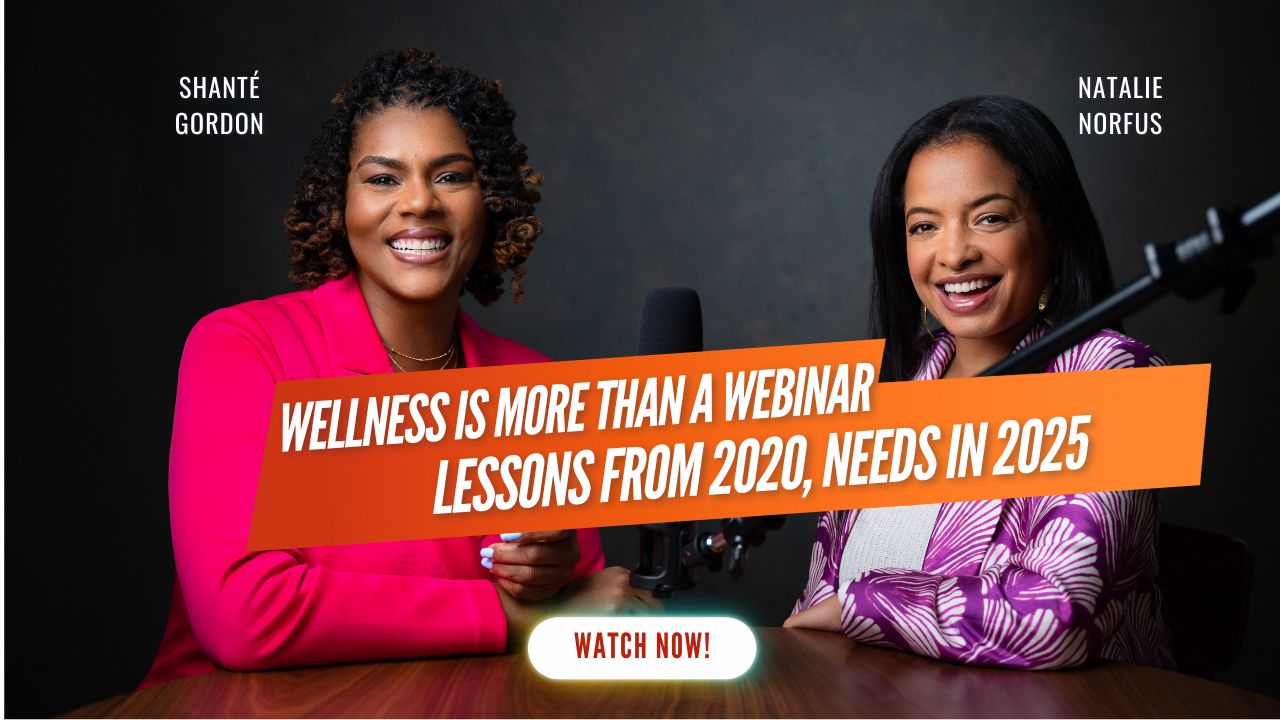Wellness Is More Than a Webinar: Lessons from 2020, Needs in 2025

If there’s one thing we’ve learned since 2020, it’s this: wellness at work cannot be treated like a checkbox.
In this episode of What’s the DEIL?, Natalie and Shanté explore how employer wellness efforts, once defined by yoga classes, therapy webinars, and employee assistance programs, must evolve to meet the intense realities of 2025. Because right now? Everyone’s shoulders are tight. The world is on fire. And the same strategies that maybe worked back then just don’t cut it anymore.
2020 Wellness Was a Start—But It Wasn’t the Solution
In the wake of COVID-19 and the murder of George Floyd, wellness took center stage. Employers scrambled to show care—rolling out:
- Yoga and meditation sessions
- EAP reminders
- Webinars on burnout or resilience
- Movement or art-based classes
- “Feel-good” perks like mobile haircuts or eyebrow threading
The intent was solid. But the execution? Often rushed, random, and rooted more in optics than in strategy.
“Everything felt very short-sighted. People threw things at the wall to see what would stick, then pulled the plug too fast when they didn’t get instant gratification.”
Employers wanted results—but couldn’t define success. And employees could feel the inconsistency.
Why 2025 Wellness Has to Hit Different
The world has changed dramatically, and so have employees:
- News cycles are unrelenting
- Political unrest is rising
- Economic instability is real
- Trust in leadership is low
People are exhausted, skeptical, and (rightfully) wary of performative care.
So what does this mean?
It’s time for employers to redefine what wellness really means at work—and more importantly, what it doesn’t.
What Wellness Is Not in 2025
❌ A 6-week yoga series that disappears if 3 people skip
❌ A “self-care” webinar during lunch with no follow-up
❌ A mental health Slack channel with zero engagement from leadership
❌ A one-time listening session followed by silence
“Wellness programs aren’t working because employers aren’t giving them time to work. If it’s not an overnight success, they pull the plug—and employees notice.”
What Employees Really Need Right Now
Employees in 2025 need:
- Clear boundaries and expectations (aka less chaos)
- Opportunities to disconnect and preserve energy
- Clarity around what support is available (and what’s not)
- A sense of psychological safety and transparency
- Realistic workloads and empathetic management
- Trust that their voices will be heard and acted on
“Don’t activate employees’ emotions if you’re not prepared to support them.”
That’s the new gold standard for wellness: care with clarity.
So, Should You Still Offer Wellness Programs?
Yes—if you’re clear about what you’re doing and why.
Here’s how to move forward with integrity:
- Start with your data. What are your employees telling you? Use surveys and listening sessions—but only if you plan to act on the feedback.
- Set expectations. Be honest about what you can (and can’t) offer. Clarity builds trust—even if the answer is “not right now.”
- Offer choice. Not everyone wants to talk. Some just want to rest, opt out, or pursue their own wellness in peace.
- Invest in what works. Instead of chasing trends, focus on what creates psychological safety, community, and long-term trust.
- Redefine the employer’s role. You’re not your employees’ therapist or life coach. You are responsible for creating a humane, healthy workplace.
A New Era: From Lip Service to Real Support
In 2025, wellness at work isn’t a bonus. It’s a reflection of how well you understand your people.
- Are your programs intentional or improvised?
- Do your actions match your values?
- Are you offering what people truly need—or what you think they need?
“Don’t just throw a massage chair in the breakroom and call it care.”
Connect With Us
If you found this discussion compelling, we invite you to connect with us further. Here are some ways to stay in touch:
- Follow Natalie Norfus on LinkedIn
- Follow Shanté Gordon on LinkedIn
- Book a consultation with The Norfus Firm
- Follow What’s the DEIL on Instagram and TikTok
